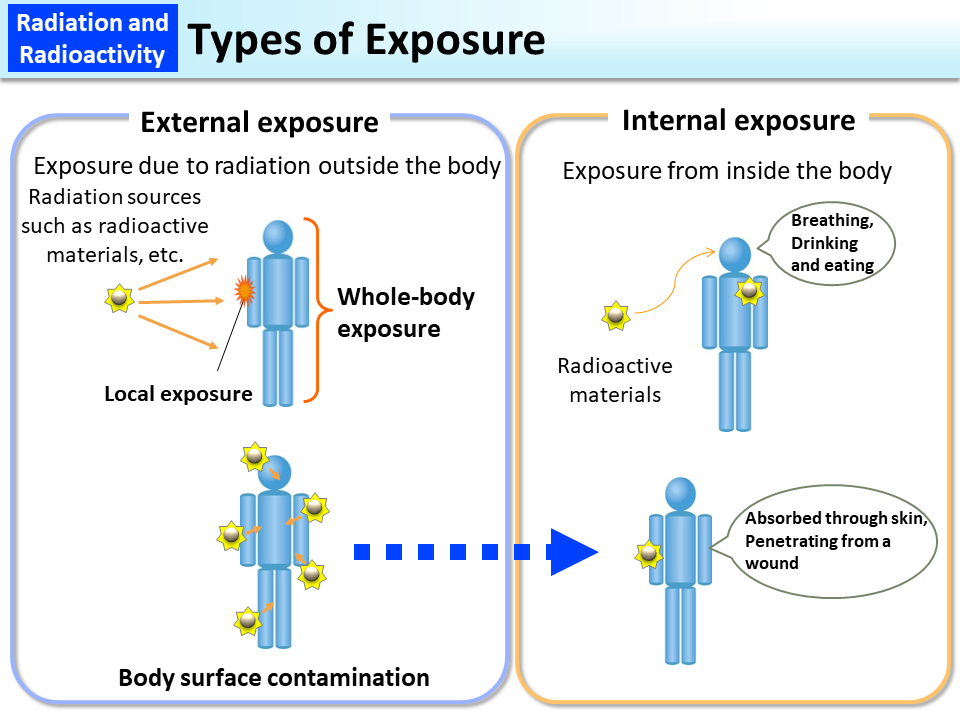Types of Exposure
To receive radiation from radioactive materials is called radiation exposure. On the other hand, radioactive contamination means that matter, including people and places, is contaminated with radioactive materials. In other words, radioactive contamination suggests that some radioactive materials exist in places where radioactive materials do not usually exist.
To receive radiation from radioactive materials outside the body is called external exposure.
If a person breathes in radioactive materials in the air or takes contaminated food or drink into their body, he/she will be exposed to radiation from inside their body. In addition, radioactive materials can also enter the body from wounds. Receiving radiation in this way is called internal exposure.
For internal and external exposures, the relevant radiation types (α (alpha)-particles, β (beta)-particles and γ (gamma)-rays) (for details, refer to Vol. 1, “1.3 Radiation”) and radioactive materials (radionuclides) are different, because the ability to pass through the air or the body differs by radiation type.
In addition, the state in which radioactive materials adhere to the surface of the human body is called body surface contamination. If radioactive materials that adhere to the surface of the human body enter inside through the nose, mouth or wounds, internal contamination arises and this may cause internal exposure.
(Related to p.2 of Vol. 1, “Difference between Radiation and Radioactive Materials,” p.23 of Vol. 1, “Internal and External Exposure”)
- Included in this reference material on March 31, 2013
- Updated on March 31, 2019

